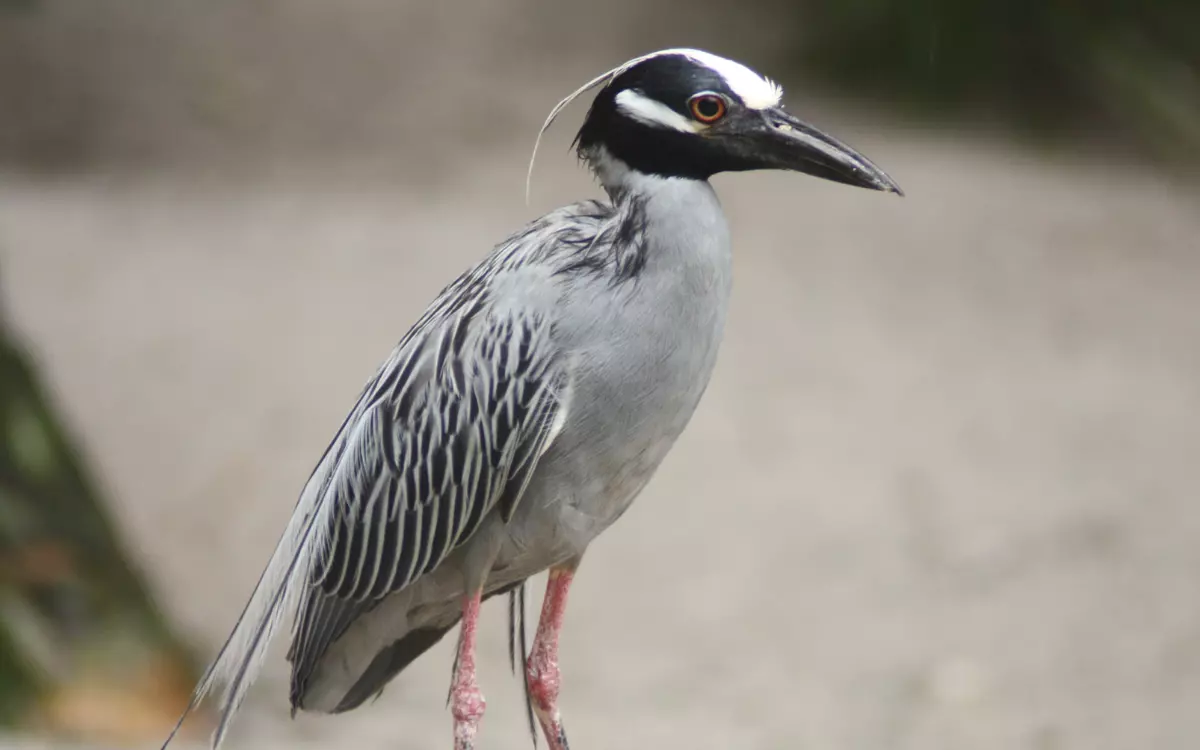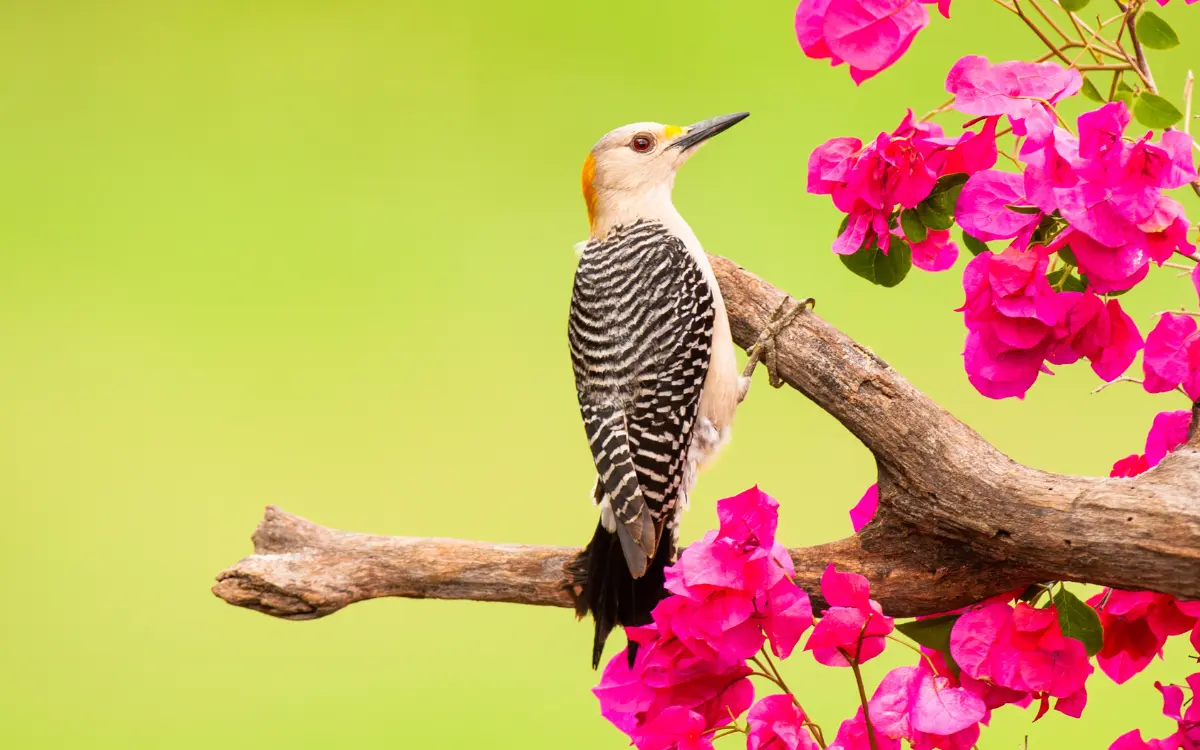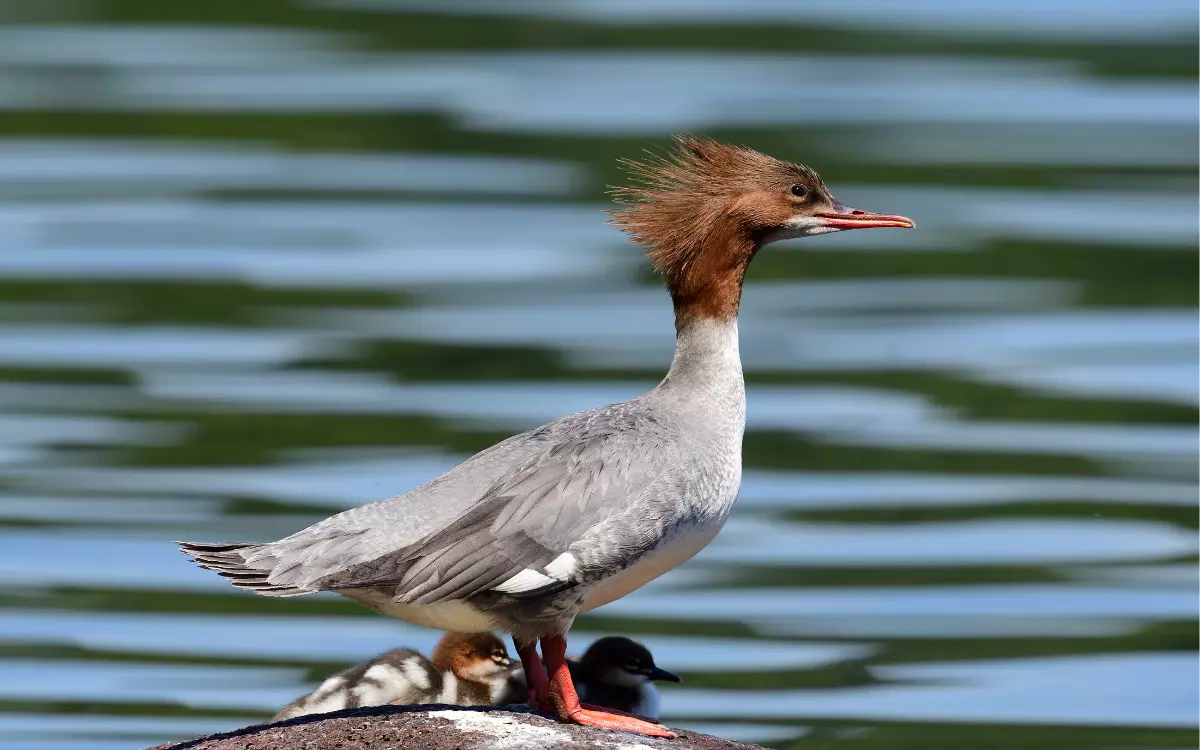6 Owls found in Florida (Photo & Guide)
Florida is home to a diverse range of owl species, from the majestic Great Horned Owl to the tiny Burrowing Owl. These nocturnal birds play a crucial role in Florida’s ecosystems by controlling rodent and insect populations. Their unique behaviors, haunting calls, and elusive nature make them fascinating to observe.
Overview of Owl Species in Florida
- Barred Owl
- Great Horned Owl
- Eastern Screech-Owl
- Barn Owl
- Burrowing Owl
- Short-eared Owl
1.Barred Owl
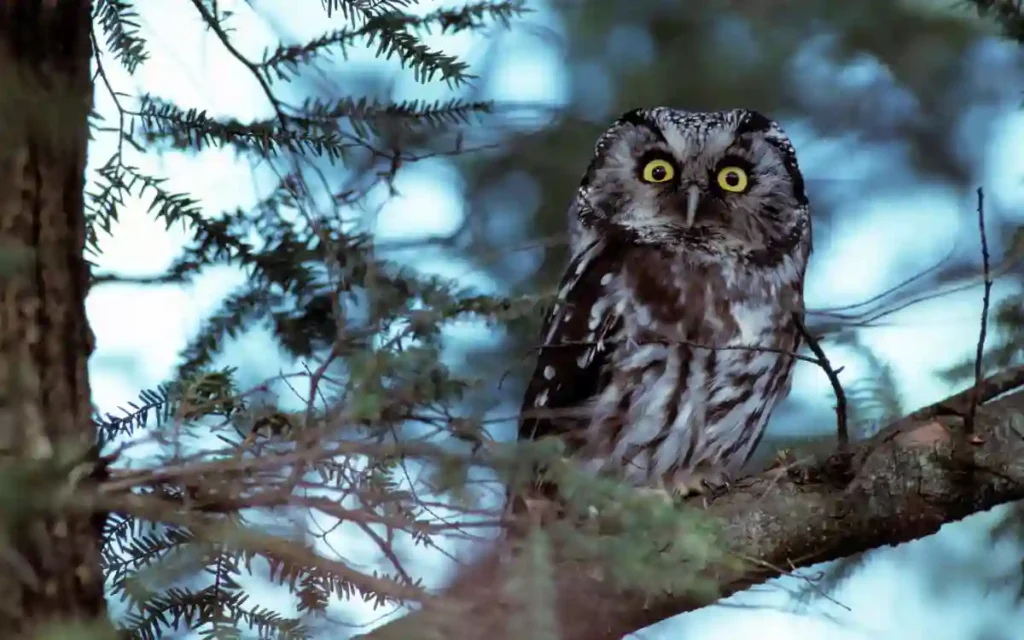
- Scientific name:Strix varia
- Size:40 to 63 cm (approximately 16 to 25 inches) in length
- Weight:468 to 1,150 g (approximately 1.03 to 2.54 lbs)
- Wingspan:96 to 125 cm (about 38 to 49 inches)
- Lifespan:18 years in the wild
Physical Characteristics:
The Barred Owl is a medium to large owl, about 17-20 inches in length, with a wingspan of 40-50 inches. It has a rounded head without ear tufts, dark eyes, and distinctive horizontal and vertical brown barring across its chest. Its call is famous for sounding like “Who cooks for you? Who cooks for you all?”
Habitat:
Barred Owls prefer dense woodlands, swamps, and forests. They are commonly found in areas near water, including cypress swamps and mixed hardwood forests, throughout Florida.
Behavior:
Barred Owls are nocturnal hunters, feeding on small mammals, birds, reptiles, and amphibians. They perch quietly and swoop down to catch prey. They nest in tree cavities or use abandoned nests of other large birds. Barred Owls are monogamous and typically lay 2-4 eggs per clutch.
Conservation Status:
The Barred Owl population is stable across Florida, and they are not considered at risk. However, habitat destruction, particularly the loss of old-growth forests and wetlands, could pose future threats to their population. Conservation efforts focus on preserving their woodland habitats.
2.Great Horned Owl
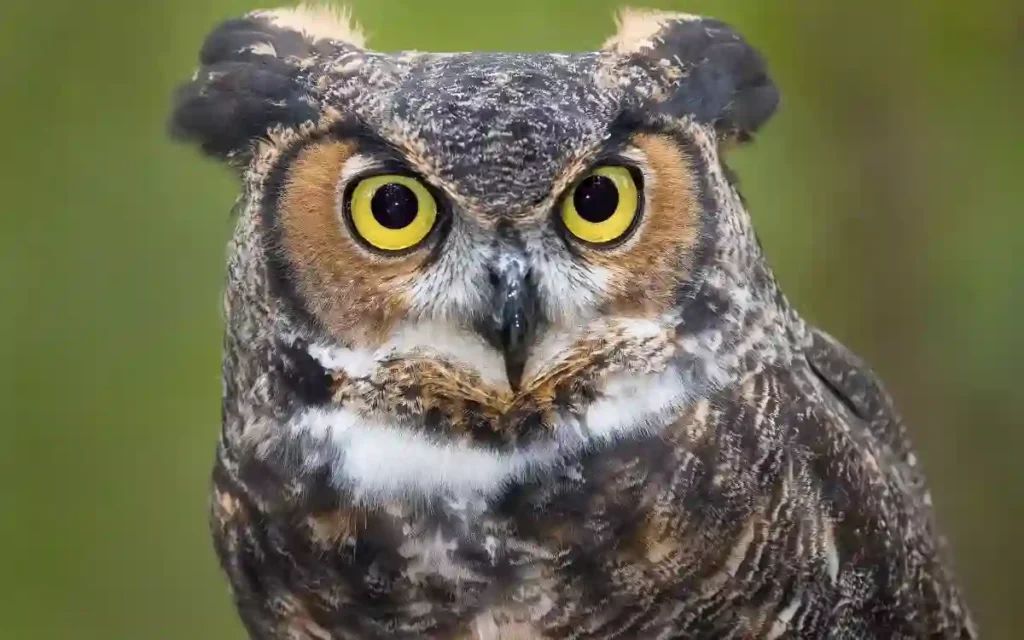
- Scientific Name: Bubo virginianus
- Size:43 to 64 cm (approximately 17 to 25 inches) in length
- Weight:0.9 to 2.7 kg (approximately 2 to 6 lbs)
- Wingspan: 1.5 m (about 5 ft)
- Lifespan:15 to 25 years
Physical Characteristics:
The Great Horned Owl is one of the largest owl species, measuring 18-25 inches in length, with a wingspan of up to 60 inches. It is easily recognized by its prominent ear tufts (often referred to as “horns”) and piercing yellow eyes. Its plumage is mottled brown with a lighter underside, providing excellent camouflage.
Habitat:
Great Horned Owls are highly adaptable and can be found in a wide range of habitats, including forests, swamps, grasslands, and even urban and suburban areas. They thrive in Florida’s diverse environments, from wilderness areas to city parks.
Behavior:
Known as aggressive and powerful hunters, Great Horned Owls prey on a wide variety of animals, including rabbits, squirrels, birds, and even larger prey like skunks. They hunt primarily at night, using their silent flight and excellent vision to ambush prey. They are territorial and often reuse old nests of other birds like hawks or crows.
Conservation Status:
The Great Horned Owl is common and widespread throughout Florida. It faces minimal conservation threats, though habitat destruction and human interference can impact local populations. They are highly resilient, adapting well to both rural and urban settings.
3.Eastern Screech-Owl
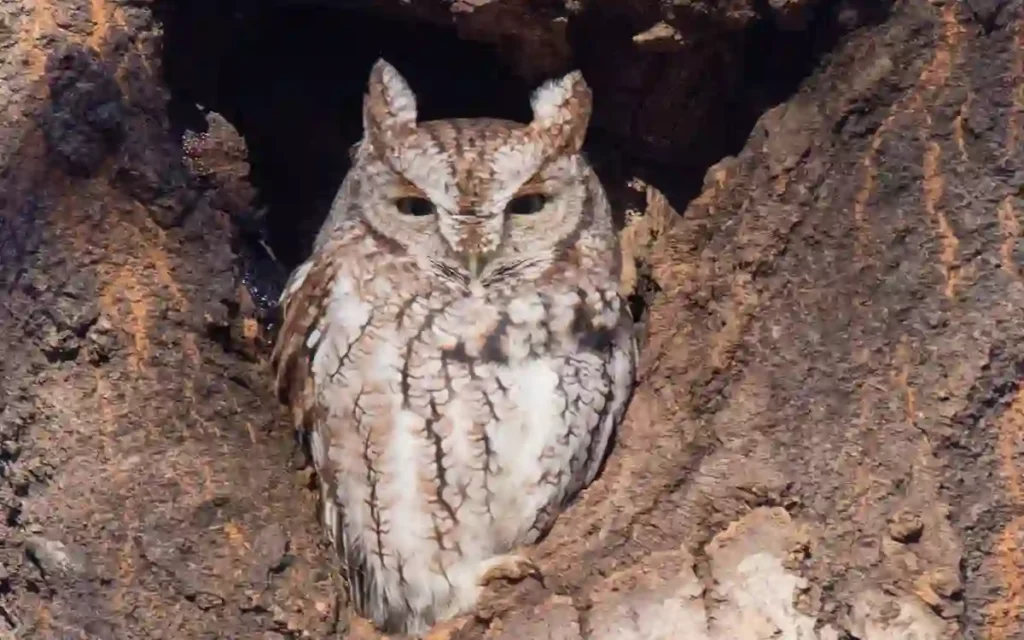
- Scientific name:Megascops asio
- Size:16 to 24 cm (approximately 6.3 to 9.4 inches) in height.
- Weight: 166 g (approximately 5.85 oz),
- Wingspan:48 to 61 cm (about 18.9 to 24.0 inches)
- Lifespan:3 to 5 years
Physical Characteristics:
The Eastern Screech-Owl is a small owl, measuring around 6-10 inches in length with a wingspan of 18-24 inches. It has two distinct color morphs: gray and red. Both morphs provide excellent camouflage, blending into tree bark. They have a compact body, rounded head with small ear tufts, and bright yellow eyes. Their call is a soft, haunting trill or whinny-like sound.
Habitat:
Eastern Screech-Owls prefer wooded areas but are also commonly found in suburban neighborhoods and parks. They nest in tree cavities, either natural or made by woodpeckers, and are often seen in areas with a mix of trees and open spaces.
Behavior:
Eastern Screech-Owls are nocturnal hunters, feeding primarily on insects like beetles and moths, as well as small rodents, birds, and occasionally amphibians. They perch quietly and swoop down to catch prey. Unlike many larger owls, they are highly adaptable to human presence and can thrive near residential areas.
Conservation Status:
The Eastern Screech-Owl population is stable and widespread across Florida. They adapt well to human environments, often nesting in backyard trees or birdhouses. There are no significant conservation concerns at this time, though habitat preservation remains important for long-term stability.
4.Barn Owl

- Scientific Name: Tyto alba
- Size: 33 to 39 cm (approximately 13 to 15 inches)
- Weight:400 to 700 g (approximately 0.88 to 1.54 lbs)
- Wingspan:100 cm (about 39 inches)
- Lifespan: 4 to 5 years
Physical Characteristics:
The Barn Owl is easily recognized by its striking heart-shaped face, white or pale body, and ghostly, silent flight. It measures about 12-15 inches in length, with a wingspan of 30-43 inches. Its underparts are white, while the back is mottled with gray and golden-brown. The owl’s large, dark eyes and slender body give it a distinct, ethereal appearance, especially in low light.
Habitat:
Barn Owls prefer open habitats such as fields, grasslands, and agricultural areas. They are often found nesting in barns, silos, or other structures near farmlands, but they can also inhabit natural cavities in trees or cliffs. Their preference for open spaces makes Florida’s rural areas prime spots for them.
Behavior:
Barn Owls are known for their silent flight, a result of specialized feathers that muffle sound, allowing them to hunt undetected. They primarily feed on small mammals, especially rodents, making them highly beneficial for pest control in agricultural areas. They hunt at night, using their exceptional hearing to locate prey in complete darkness.
Conservation Status:
While Barn Owls are considered stable and widespread, they may face habitat loss due to the decline of open spaces and suitable nesting sites. However, their role as natural pest controllers makes them valuable in agricultural settings. Conservation efforts focus on preserving their habitats and providing artificial nest boxes where natural sites are scarce.
5.Burrowing Owl
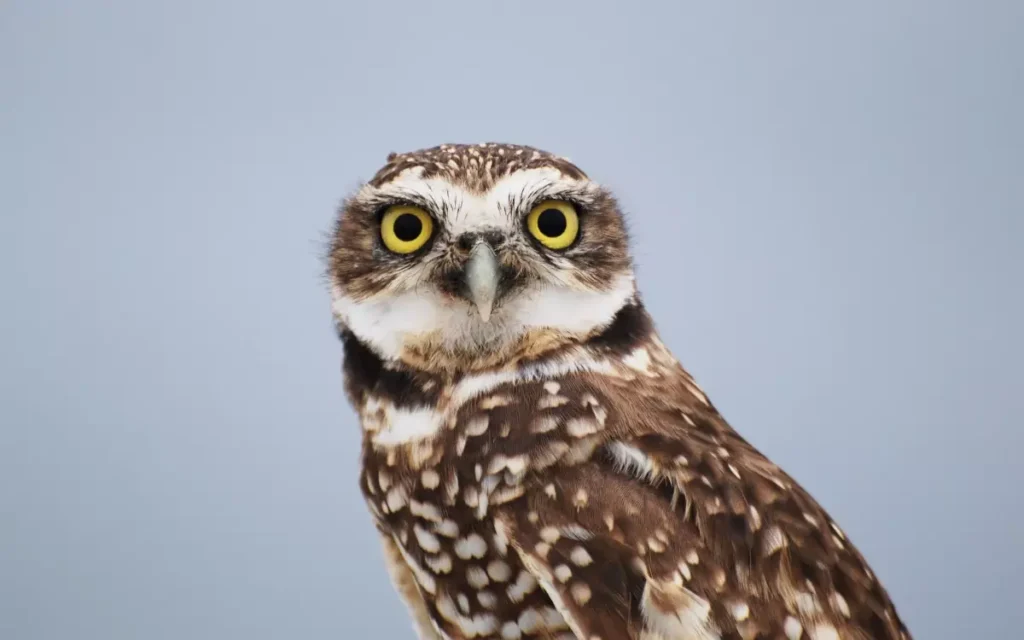
- Scientific name:Athene cunicularia
- Size: 19 to 28 cm (approximately 7 to 11 inches)
- Weight: 140 to 240 g (approximately 5 to 8 oz)
- Wingspan:50.8 to 61 cm (about 20 to 24 inches)
- Lifespan:6 to 8 years
Physical Characteristics:
The Burrowing Owl is a small, ground-dwelling owl, standing about 7-10 inches tall with long legs that help it navigate its terrestrial habitat. Unlike many other owl species, it has no ear tufts. Its plumage is brown with white spots, and it has bright yellow eyes and a white “eyebrow” above each eye, giving it a distinctive look. Its relatively small size and preference for open spaces set it apart from other owls.
Habitat:
Burrowing Owls are unique in their preference for open areas, such as grasslands, prairies, pastures, and even human-made environments like golf courses and airports. They live in burrows, often using those dug by other animals, such as prairie dogs or tortoises, but they may also dig their own. In Florida, they are often found in sandy, open areas.
Behavior:
Unlike most owls, Burrowing Owls are often diurnal, meaning they are active during the day, although they also hunt at night. They feed on a variety of prey, including insects (like grasshoppers and beetles), small mammals, birds, and amphibians. Burrowing Owls are social and can live in colonies, making their behavior distinct from solitary owl species.
Conservation Status:
Burrowing Owls are listed as threatened in some regions, including Florida, primarily due to habitat loss caused by urban development. Conservation efforts focus on protecting their open habitats and providing safe nesting sites. Artificial burrows and habitat restoration projects are essential to their survival in threatened areas.
6.Short-eared Owl
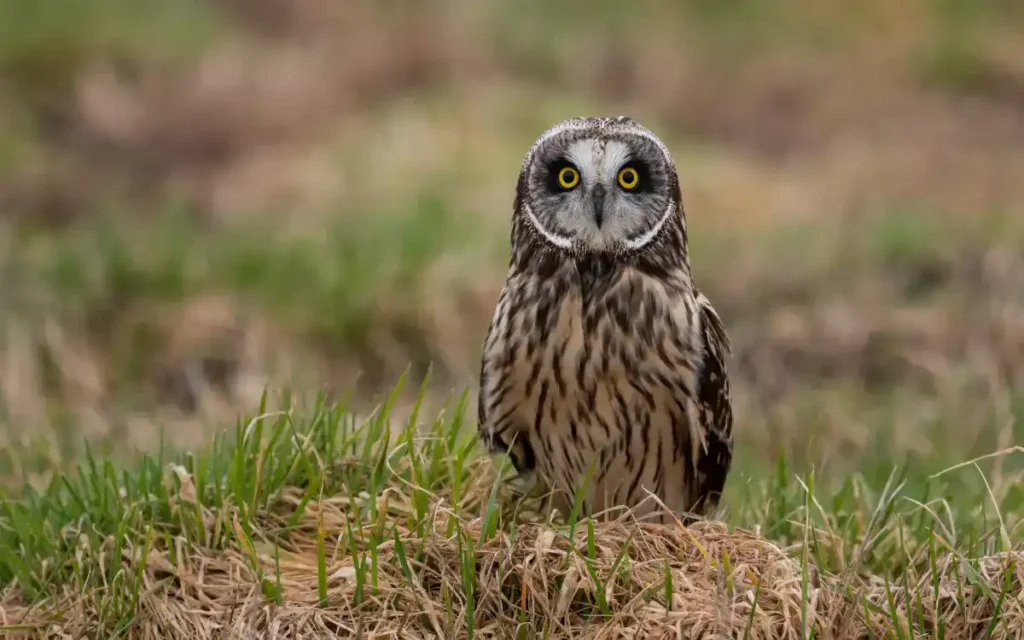
- Scientific name:Asio flammeus
- Size: 34 to 43 cm (approximately 13 to 17 inches)
- Weight: 206 to 475 g (approximately 7.3 to 16.8 oz)
- Wingspan:85 to 110 cm (about 33 to 43 inches)
- Lifespan:4 to 10 years
Physical Characteristics:
The Short-eared Owl is a medium-sized owl, measuring around 13-17 inches in length with a wingspan of 33-40 inches. It has distinct facial discs that give it a round, flat face, and its small, barely visible ear tufts are what give this owl its name. Its plumage is mottled brown and buff, with streaked underparts that provide excellent camouflage in grasslands.
Habitat:
Short-eared Owls prefer open habitats such as grasslands, prairies, and marshes. In Florida, they are migratory, arriving primarily in the winter months. They can be found in areas with low vegetation, where they hunt and nest on the ground.
Behavior:
These owls are ground-nesters, often creating simple nests in tall grasses or marshes. They are primarily crepuscular, hunting small mammals like voles and mice during dusk and dawn. Their flight is characterized by low, buoyant wingbeats as they search for prey.
Conservation Status:
The Short-eared Owl is considered uncommon in Florida due to its migratory nature. While not currently endangered, habitat loss of open areas like grasslands threatens their population. Their migratory habits and preference for less populated areas make them more difficult to observe than other owl species.
Related article:-
- 11 Types of Red Birds in Florida
- 14 White Birds in Florida: Exploring Their (ID & PICS)
- 36 Species of Warblers In Florida: Length, Weight ,Wingspan
- 10 Finches in Florida with Photo
Owl Habitat Preferences in Florida
Florida’s diverse landscapes provide rich habitats for a variety of owl species. Swamps and forests are ideal for species like the Barred Owl and Great Horned Owl, which prefer dense woodlands and areas near water sources. Open grasslands and marshes support owls like the Burrowing Owl and Short-eared Owl, which thrive in low-vegetation environments. Even urban areas and suburban neighborhoods are home to adaptable species like the Eastern Screech-Owl and Great Horned Owl, which can live in parks and residential spaces.
Florida is home to several conservation areas and wildlife refuges known for owl sightings. The Everglades National Park and Big Cypress National Preserve provide extensive swamp and forest habitats for species like Barred and Great Horned Owls. In contrast, Merritt Island National Wildlife Refuge and the Apalachicola National Forest offer grasslands and marsh areas ideal for spotting Burrowing and Short-eared Owls. These protected areas are crucial for preserving the natural habitats that support Florida’s owl populations.
Owls’ Role in Florida Ecosystems
Owls play a crucial role in controlling rodent and insect populations across Florida’s ecosystems. As nocturnal predators, they feed on a wide variety of prey, including mice, rats, voles, insects, and small birds. By keeping rodent populations in check, owls help reduce crop damage in agricultural areas and limit the spread of diseases that rodents may carry.
In marshes, grasslands, forests, and urban settings, owls contribute to maintaining ecological balance. Their predatory activities prevent overpopulation of small mammals and insects, which could otherwise disrupt plant and animal communities. By regulating these prey populations, owls support biodiversity and the health of their habitats.
Furthermore, as both predators and prey, owls are integral to the food web. Larger predators, such as hawks and eagles, may occasionally hunt owls, highlighting their position in the ecosystem. Overall, owls are vital for maintaining healthy, balanced environments throughout Florida.
Conservation Efforts and Threats
Conservation efforts to protect owls in Florida focus on habitat preservation and legal protections. Protected areas such as wildlife refuges and national parks help maintain the natural environments that owls rely on, from forests and swamps to grasslands. Many species, like the Burrowing Owl, benefit from artificial burrows and other targeted initiatives that support nesting in areas affected by human development. Additionally, laws such as the Migratory Bird Treaty Act provide legal protection to prevent the hunting or disturbance of owl species.
However, owls face several significant threats. Habitat destruction due to urbanization, agriculture, and deforestation is one of the most pressing issues, reducing the natural spaces owls need for nesting and hunting. Human interference, including the use of pesticides, can reduce food availability and expose owls to toxic chemicals. Climate change also poses a growing threat by altering habitats and disrupting migratory patterns, which could impact food sources and breeding cycles.
How to Spot Owls in Florida
The best time to observe owls in Florida is during dusk and dawn, as most owl species are crepuscular or nocturnal. Great spots for owl-watching include wooded areas, swamps, and open fields, particularly in wildlife refuges like the Everglades or Merritt Island National Wildlife Refuge. Look for owls perched in trees or listen for their distinct calls.
To identify owls, pay attention to their calls: Barred Owls have a “Who cooks for you?” call, while Eastern Screech-Owls produce a soft trill. Owls are also recognized by their silent flight, thanks to specially adapted feathers. Their hunting behavior is often deliberate, involving a slow glide as they search for prey.
When owl-watching, follow ethical birdwatching practices. Keep a respectful distance and avoid disturbing the birds, especially during nesting season. Use binoculars rather than approaching closely, and refrain from playing recorded calls, which can cause stress to the owls. By being mindful, you can enjoy watching owls without impacting their natural behavior.
Conclusion
Florida is home to a diverse array of owls, each playing a vital role in controlling pests and maintaining ecological balance. These fascinating birds enrich our ecosystems, and it’s important to protect their habitats. By engaging in responsible birdwatching and supporting conservation efforts, we can help preserve Florida’s owls for future generations.

